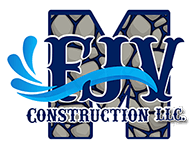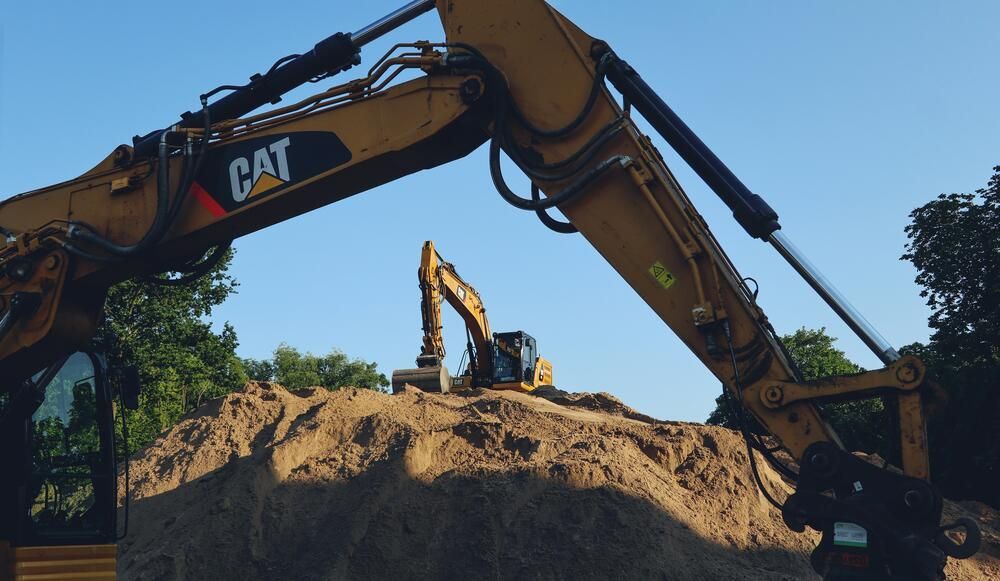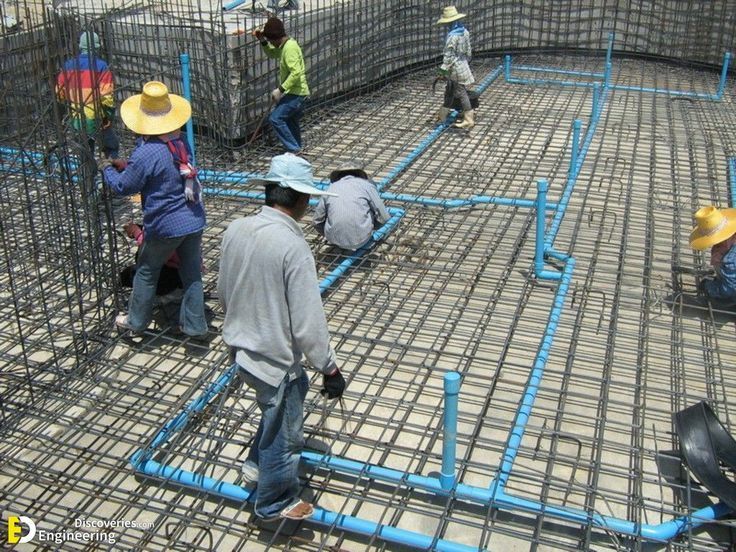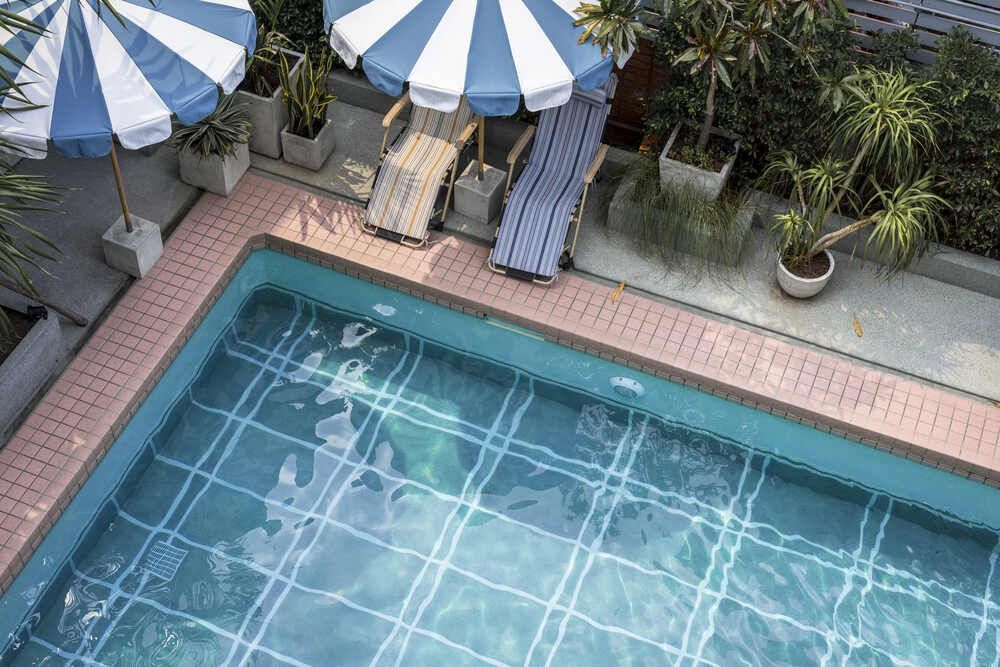9 Ways to Ensure Energy Efficiency in Your Inground Pool Installation
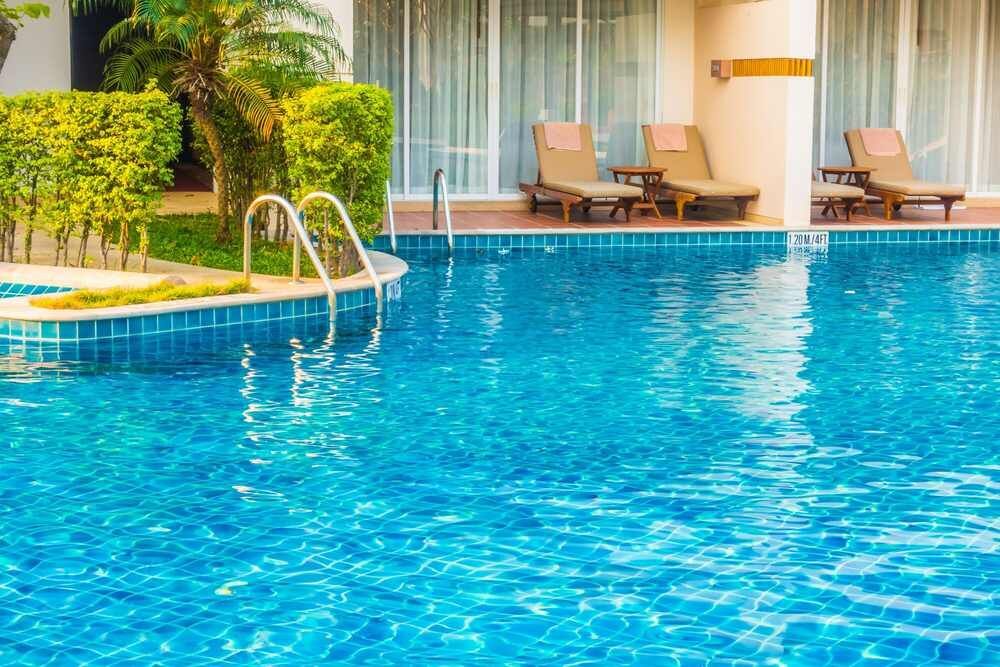
As pool owners become more conscious of their environmental impact and energy costs, ensuring energy efficiency in your inground pool installation has become increasingly important. This shift towards sustainability helps reduce your carbon footprint and leads to significant savings on utility bills, making it a win-win situation. By incorporating modern technologies and best practices, you can maintain a comfortable and enjoyable pool environment while minimizing energy consumption. Whether planning a new installation or upgrading an existing pool in Danbury, CT, these strategies will help you achieve an eco-friendly and cost-effective solution.
Table of Contents
Table of Contents
Key Takeaways
Why Energy Efficiency Matters in Inground Pool Installations
9 Proven Methods for Energy-Efficient Inground Pool Installations
Additional Considerations for Energy-Efficient Pool Design
Trust FJV Construction for Energy-Efficient Inground Pool Installations
Key Takeaways
✔ Use variable speed pumps and ensure proper pump sizing for energy savings.
✔ Opt for solar heaters and heat pumps to reduce heating costs.
✔ Utilize solar covers to minimize heat loss and evaporation.
✔ Install LED lights and use timers or motion sensors for lighting control.
✔ Maintain balanced water chemistry to ensure efficient pool operation.
✔ Choose cartridge filters and keep them well-maintained.
✔ Install windbreaks to reduce heat loss from wind evaporation.
✔ Consider compact designs and optimal depth for energy efficiency.
✔ Use shade trees and strategic plant placement to reduce heating needs.
Why Energy Efficiency Matters in Inground Pool Installations
Energy efficiency is crucial in inground pool installations for environmental and economic reasons. Implementing efficient practices can save significant costs and reduce your carbon footprint. Here's why energy efficiency should be a top priority for your inground pool installation in Danbury, CT.
Cost Savings
Energy-efficient pools significantly lower utility bills by reducing the amount of energy required for heating, pumping, and lighting. Over time, the savings from reduced energy use can offset the initial investment in energy-efficient equipment.
Environmental Impact
Reducing energy consumption in pool operations helps decrease greenhouse gas emissions, contributing to a healthier environment. By using renewable energy sources like solar heaters, you can further minimize your pool's environmental footprint. Energy-efficient practices also conserve water by reducing evaporation and the need for chemical treatments, making your pool more sustainable and eco-friendly.
Enhanced Pool Longevity
Efficient systems and regular maintenance can extend the lifespan of your pool equipment, reducing the need for frequent replacements. High-efficiency pumps and heaters experience less wear and tear, leading to fewer breakdowns and repairs. Proper water chemistry and clean filters prevent damage to the pool's infrastructure. Investing in quality materials and equipment ensures your pool remains in top condition for years.
Improved Comfort and Usability
Energy-efficient pools maintain consistent and cleaner water temperatures, enhancing the swimming experience. Efficient heating systems quickly bring the pool to a comfortable temperature without excessive energy use. Automated systems and smart controllers allow for easy management and scheduling, ensuring the pool is ready whenever you are. Enhanced comfort encourages more frequent use and enjoyment of your pool.
9 Proven Methods for an Energy-Efficient Inground Pool Installation
Ensuring energy efficiency in your inground pool installation saves you money and reduces environmental impact. Adopting smart practices and modern technologies can significantly reduce energy consumption. From choosing the right equipment to maintaining optimal conditions, these tips will help create a sustainable and cost-effective inground pool installation.
1. Invest in a High-Efficiency Pump
High-efficiency pumps, particularly variable speed models, adjust to the pool's needs, saving substantial energy compared to traditional single-speed pumps. This investment not only lowers your utility bills but also extends the lifespan of your pool equipment by reducing wear and tear. Consider these tips:
Choose Variable Speed Pumps
Variable speed pumps adjust their speed to match the pool's needs, saving energy. Unlike single-speed pumps that run at a constant speed, variable-speed pumps operate at lower speeds for filtration and higher speeds for cleaning and heating. This flexibility can lead to significant energy savings, as the pump runs at the most efficient speed for each task. According to the U.S. Department of Energy, variable-speed pumps can save up to 90% more energy than traditional single-speed pumps, translating to substantial cost savings over time.
Proper Pump Sizing
Ensure your pool's pump is the right size to avoid unnecessary energy use. An oversized pump can lead to excessive energy consumption and unnecessary wear on the pump and pool equipment. Conversely, a properly sized pump will run more efficiently, providing adequate water circulation without wasting energy. Proper pump sizing ensures optimal performance, reducing energy costs and maintenance needs, thereby extending the life of your pool system.
2. Optimize Pool Heating Systems
Revamping your pool heating system is a game-changer. Efficient heating systems, such as solar heaters and heat pumps, use less energy while maintaining a comfortable water temperature. This reduces your energy bills and minimizes your pool's environmental impact.
Solar Pool Heaters
Utilizing solar energy to heat your pool is both environmentally friendly and cost-effective. Solar heaters harness the sun's natural energy, providing a renewable and sustainable way to keep your pool warm. This method significantly lowers your reliance on traditional heating fuels, reducing your carbon footprint. Over time, the savings from reduced energy costs can offset the initial investment in solar heating systems.
Heat Pumps
Heat pumps are another efficient heating option. They use ambient air to heat the pool. These systems draw in outside air, extract the heat, and transfer it to the pool water, making them highly efficient. They are particularly effective in moderate climates where temperatures do not drop too low. Heat pumps offer substantial energy savings and lower operating costs using less electricity than traditional electric heaters.
3. Install a Pool Cover
Pool covers reduce heat loss, prevent water evaporation, and lower chemical usage, making your pool more sustainable and cost-effective. This investment not only conserves energy but also enhances the overall maintenance and longevity of your pool.
Benefits of Solar Covers
Solar covers can significantly reduce heat loss and evaporation. By trapping the sun's heat and preventing it from escaping, solar covers keep your pool warmer for longer periods. This reduces the need for additional heating, saves energy, and lowers utility bills. Studies show that solar cover can cut energy costs by up to 50% to 70%, making it a highly cost-effective solution.
Reducing Evaporation
A pool cover minimizes water evaporation, saving water and reducing the need for heating and chemicals. When a pool is uncovered, significant amounts of water can evaporate daily, increasing water and energy consumption. By covering the pool, you retain more water and reduce the frequency of refilling, which also means using fewer chemicals to maintain water balance. This conserves resources and reduces operational costs, making pool maintenance more manageable and eco-friendly.
4. Utilize Efficient Lighting
Switching to energy-saving lighting options can significantly reduce electricity consumption while enjoying a well-lit pool area. This reduces energy costs and creates a more sustainable and eco-friendly pool environment.
LED Pool Lights
LED lights consume up to 90% less energy and have a lifespan of up to 25 times longer than traditional incandescent bulbs. These lights provide bright, vibrant illumination with minimal power consumption, making them a highly efficient choice for pool lighting. Additionally, their extended lifespan means fewer replacements and reduced maintenance costs. LED lights can achieve substantial energy savings and allow you to enjoy consistent, high-quality lighting for your pool.
Timers and Motion Sensors
Installing timers and motion sensors ensures lights are only on when needed, reducing energy consumption. Timers can be set to turn the lights on and off at specific times, preventing unnecessary usage during daylight hours or when the pool is not in use. Motion sensors activate the lights only when movement is detected, providing illumination precisely when needed and conserving energy the rest of the time. This smart lighting control enhances efficiency, reduces electricity bills, and extends the life of your lighting system.
5. Maintain Proper Water Chemistry
Maintaining proper water chemistry is vital for efficiently operating your inground pool installation. Balanced water chemistry reduces strain on your pool system, ensuring all components function optimally and use less energy. This practice not only saves on energy costs but also prolongs the life of your pool equipment, making maintenance easier and more cost-effective.
Regular Water Testing
Maintaining balanced water chemistry reduces strain on the pool system, ensuring it runs efficiently. Regular testing helps detect imbalances early, preventing issues that can cause equipment to work harder and consume more energy. By addressing these issues promptly, you can maintain optimal performance and efficiency. Consistent water testing is essential for identifying and correcting problems before they escalate, saving energy and reducing maintenance costs.
Balancing pH and Alkalinity
Properly balanced water chemistry ensures efficient operation of heaters and pumps, reducing energy consumption and prolonging equipment life. When pH and alkalinity levels are balanced, heaters and pumps operate within their optimal parameters, requiring less energy to maintain the desired water conditions. This reduces wear and tear on the equipment, extending its lifespan and minimizing the need for repairs or replacements. Maintaining balanced water chemistry enhances your pool system's overall efficiency and durability, leading to long-term energy and cost savings.
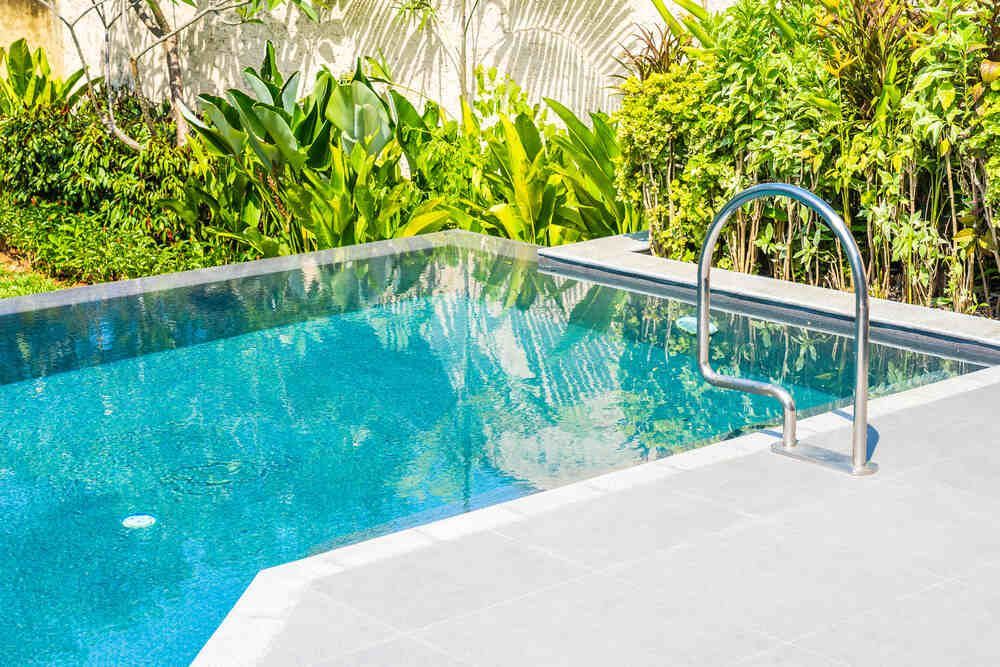
6. Use Energy-Efficient Filters
Using energy-efficient filters is crucial for reducing energy consumption in your inground pool installation. Efficient filtration systems consume less power, improve water quality, and reduce maintenance needs. This investment helps lower operational costs and extends the lifespan of your pool equipment.
Cartridge Filters vs. Sand Filters
Cartridge filters are generally more energy-efficient than sand filters, requiring less energy. Cartridge filters provide superior filtration with lower resistance, allowing the pump to run at lower speeds and consume less power. They also do not require backwashing, which saves water and energy otherwise used in the backwash process. Cartridge filters are excellent for maintaining clear water while optimizing energy efficiency.
Regular Filter Maintenance
Keeping filters clean and well-maintained ensures they operate efficiently. A clean filter reduces resistance to water flow, allowing the pump to function effectively without overworking. Regular maintenance involves cleaning or replacing filters as needed, preventing debris buildup that can strain the system and increase energy usage. Maintaining your filters ensures your pool runs smoothly and efficiently, saving energy and money in the long run.
7. Install Windbreaks
Installing windbreaks is a highly effective way to enhance energy efficiency in your inground pool installation. Windbreaks help to reduce heat loss caused by wind evaporation, keeping your pool warmer and lowering heating costs. This simple addition conserves energy and creates a more comfortable swimming environment.
Benefits of Windbreaks
Windbreaks reduce heat loss from wind evaporation, keeping your pool warmer and reducing heating costs. By blocking the wind, these barriers minimize the amount of water and heat carried away, maintaining a more stable pool temperature. This means your pool heater must work less, saving energy and reducing utility bills. Additionally, windbreaks can enhance the aesthetic appeal of your pool area, providing both functional and visual benefits.
Types of Windbreaks
Choose from natural windbreaks like hedges or artificial ones like screens. Natural windbreaks, such as trees and shrubs, offer a green, eco-friendly solution that blends seamlessly into the landscape. Artificial windbreaks, including fences and walls, provide immediate and effective protection against wind. Both types effectively reduce wind speed and evaporation, allowing for greater control over your pool's environment and improved energy efficiency.
8. Optimize Pool Size and Shape
Optimizing the size and shape of your pool is a key factor in achieving energy efficiency in your inground pool installation. By carefully considering the pool's dimensions, you can significantly reduce the amount of water, chemicals, and energy required for maintenance. This thoughtful approach lowers operational costs and creates a more sustainable and manageable pool environment.
Compact Pool Designs
Smaller pools require less water, chemicals, and energy to maintain. A compact design minimizes the volume of water that needs to be heated and circulated, leading to lower energy consumption. With less surface area, there is also a reduction in water evaporation and heat loss, contributing to overall energy efficiency. Considering a compact design for your inground pool installation in Danbury, CT, can provide both environmental and economic benefits.
Efficient Pool Depth
Shallow pools require less water and are easier to heat. By reducing the pool's depth, you decrease the volume of water that needs to be warmed, resulting in significant energy savings. Shallow pools also have less thermal mass, meaning they lose heat more slowly and require less energy to maintain a comfortable temperature. Optimizing the depth of your pool can effectively reduce heating and circulation costs, making your pool more energy-efficient.
9. Landscaping for Energy Efficiency
Landscaping around your inground pool installation is aesthetically pleasing and crucial for enhancing energy efficiency. Strategic use of shade trees and plants can significantly reduce heating and evaporation, conserving energy and water. This natural approach helps create a more sustainable and cost-effective pool environment in Danbury, CT.
Shade Trees and Plants
Planting trees and shrubs around your pool area can provide natural shade, reducing the need for additional heating. These plants create a cooler microclimate by blocking direct sunlight and lowering the ambient temperature around the pool. This reduces the energy required to maintain a comfortable water temperature, lowering heating costs. Additionally, the shade provided by trees and shrubs enhances the comfort and usability of your pool area during hot weather.
Strategic Plant Placement
Positioning plants to block wind can reduce evaporation and heat loss. By acting as natural windbreaks, strategically placed plants minimize the cooling effects of wind on the pool's surface. This helps maintain a more stable and warmer pool temperature, reducing the need for additional heating. Effective plant placement not only conserves energy but also enhances the visual appeal of your pool area, creating a more inviting and efficient space.
Additional Considerations for Energy-Efficient Pool Design
Beyond the primary strategies for improving energy efficiency in your inground pool installation, several additional considerations can further enhance your pool's performance. These factors include selecting the right materials, maintaining your pool regularly, and upgrading existing systems. By addressing these areas, you can achieve even greater energy savings and sustainability for your pool in Danbury, CT.
Choose the Right Materials
Choosing the right materials for your inground pool installation is crucial for maximizing energy efficiency. Proper materials can reduce heat loss, maintain water temperature, and minimize energy consumption.
Insulated Pool Walls
Insulating pool walls can reduce heat loss, maintaining a warmer pool temperature with less energy. You can significantly improve your pool's thermal retention by using high-quality insulation materials. This means your pool heater will have to work less to keep the water at a comfortable temperature, saving energy costs. In the long run, insulated pool walls contribute to overall energy efficiency and enhance the durability of your pool structure.
Energy-Efficient Pool Surfaces
Surfaces like vinyl or fiberglass retain heat better than concrete, reducing heating requirements. These materials have lower thermal conductivity, which means they lose less heat to the surrounding environment. As a result, your pool remains warmer for longer periods without the need for constant heating. Selecting energy-efficient pool surfaces reduces energy consumption and helps maintain a consistent and comfortable water temperature, improving the swimming experience.
Regular Maintenance and Inspections
Regular maintenance and inspections are critical for maintaining energy efficiency in your inground pool installation. Consistent upkeep ensures all components function optimally, preventing energy waste and costly repairs.
Preventive Maintenance Tips
Regular maintenance of your pool's equipment ensures it runs efficiently. Tasks like cleaning filters, inspecting pumps, and checking heaters prevent buildup and malfunctions that can lead to increased energy use. Keeping these components in good working order reduces the strain on your pool system, which helps maintain optimal performance. Routine maintenance also helps in the early detection of issues, allowing for timely repairs that can prevent costly energy waste and extend equipment life.
Professional Pool Inspections
Annual inspections by a professional can identify and address potential energy efficiency issues. Professionals have the expertise to spot problems that may not be apparent during regular maintenance. These inspections can uncover inefficiencies or potential failures in your pool system that could lead to increased energy consumption. By addressing these issues promptly, you can ensure that your pool remains energy-efficient, saving you money on utilities and reducing the need for major repairs.
Trust FJV Construction for Energy-Efficient Inground Pool Installations
For your next inground pool installation in Danbury, CT, trust the experts at
FJV Construction. Our extensive experience and commitment to sustainability make us your ideal partner for ensuring your pool is beautiful and energy-efficient.
Contact FJV Construction today to discuss your inground pool installation needs and discover how they can help you save energy and reduce costs. Invest in an energy-efficient inground pool installation today and enjoy the benefits for years.
Our Info
Monday to Friday from 7 am to 6 pm
Saturdays from 8 am to 5 pm
We Accept Cash and Checks
LOCATION
We Cover 80 Miles around Bethel,
Danbury, and Brookfield
Bethel, Connecticut 06801
Danbury, Connecticut 06810
Brookfield, Connecticut 06804
Navigation
Copyright FJV Construction, All Rights Reserved
